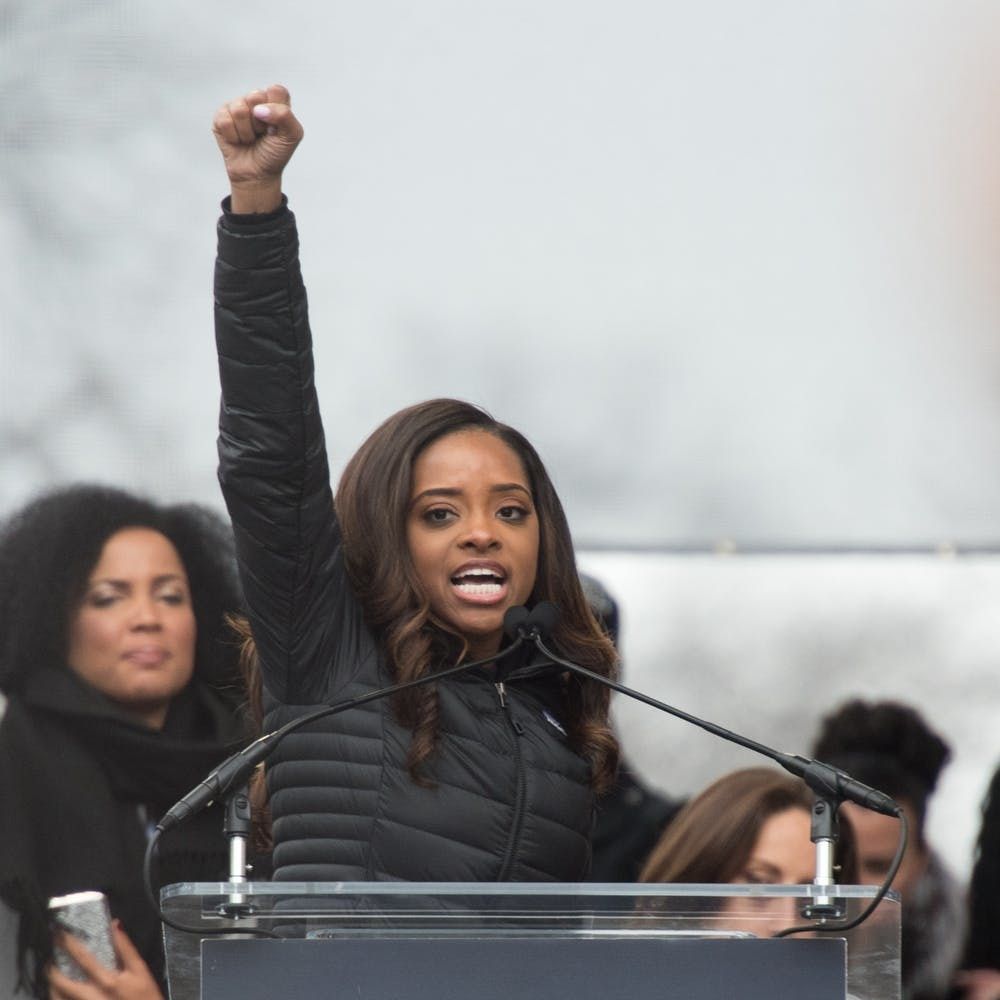In January 2017, the Women’s March on Washington alone drew approximately 500 thousand ladies — not to mention the (literal) millions of participants who showed up to raise their voices at 600 other locations worldwide. Timed just one day after the controversial inauguration of President Trump, the history-making event inspired headlines and social media hysteria based on sheer numbers and — perhaps more importantly — because of its loud-and-proud statement about the unbreakable bonds of peaceful sisterhood.
The fervor generated by the Women’s March wasn’t over on January 22. The movement had a 100-day plan, which encouraged concerned Americans everywhere to send postcards to local Congress members, join other activist groups, get involved in other marches, and organize “huddles” (groups of 10-15 like-minded pals who can help you visualize a safer, happier world, and create a plan to make it a reality).
In early February, the visionaries behind the Women’s March announced early plans for “A Day Without a Woman.” Scheduled on International Women’s Day (March 8), the peaceful strike was intended to make a statement to society about what our communities and workplaces would actually look like if women were to withdraw from them. Once again, social media and the mainstream news basically went nuts. If exposure was the goal, these amazing movements are definitely taking care of business.
But it doesn’t stop there. Musicians, artists, and creatives of all types continue to express their frustrations and fears with the state of women’s rights in our world today — for just one example, check out this Nasty Women-themed global art movement, which has totally subverted now-President Trump’s infamous incident of name-calling from the 2016 debates. Influencers from all corners of pop culture and politics are still encouraging voters to contact local representatives to voice their concerns and help shape the future of their communities.
We love that the momentum started by the Women’s March is showing no signs of slowing down, and it’s important we all do our part to contribute by sharing our support via social media, staying informed about the relevant issues, and actually showing up to the awesome events that are bound to crop up in the future. The March itself — along with the activism it’s catalyzed since January — still matters, mostly because it’s a reminder to others that we’re. Still. Here. By continuing to stay involved in the movement, we prove that we’re more than just bandwagonners who wanted to pose for selfies in pink pussy hats the day after the inauguration. Tough political conversations, marches, financial contributions, and a general “get ’em girl” attitude are more important now than ever.
If you’re wondering who to thank for jumpstarting all these warm and fuzzy (yet also fired-up) sisterhood vibes, look no further than Women’s March National Co-Chairs Carmen Perez, Tamika Mallory, and Bob Bland. These are the women helping to inspire so many of us to fight for our rights, and doing the good (and challenging) work of harnessing our energy to make sure that our efforts are organized, effective, and noticed. If you want to hear more from the co-chairs, we have good news for you. Perez, Mallory, and Bland will be keynote speakers at this year’s Her Conference, a career development conference for college women scheduled for this July 22-23 in New York City. You can get all the details and learn more about buying tickets here.
What would you like to ask the Women’s March co-chairs? Tweet us @BritandCo!
(Photos via Mario Tama, Noam Galai/Getty)
